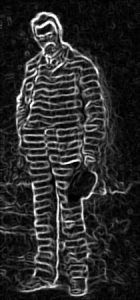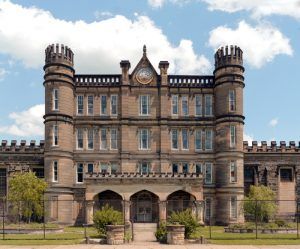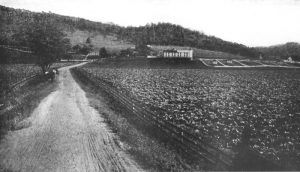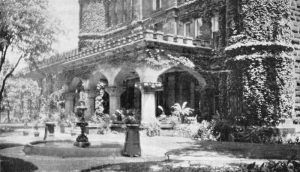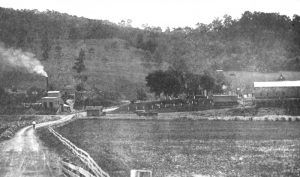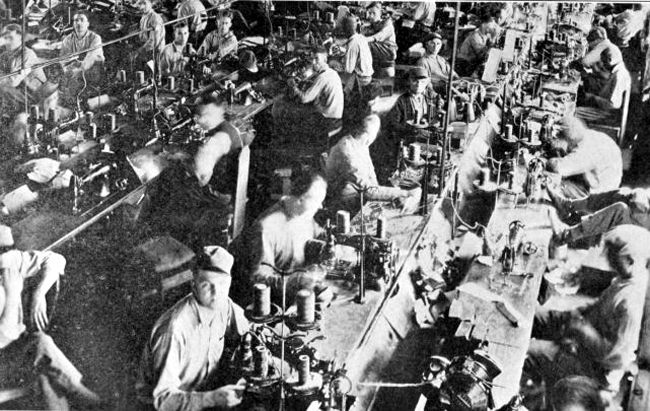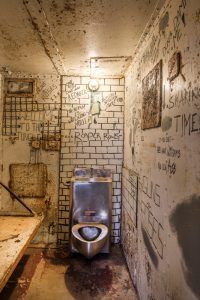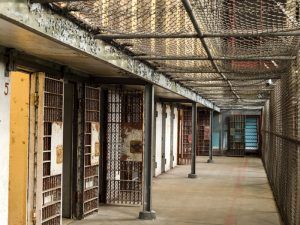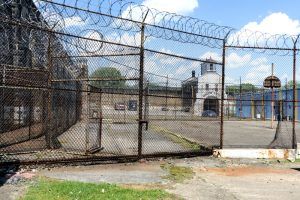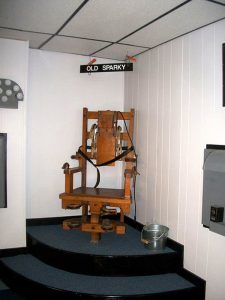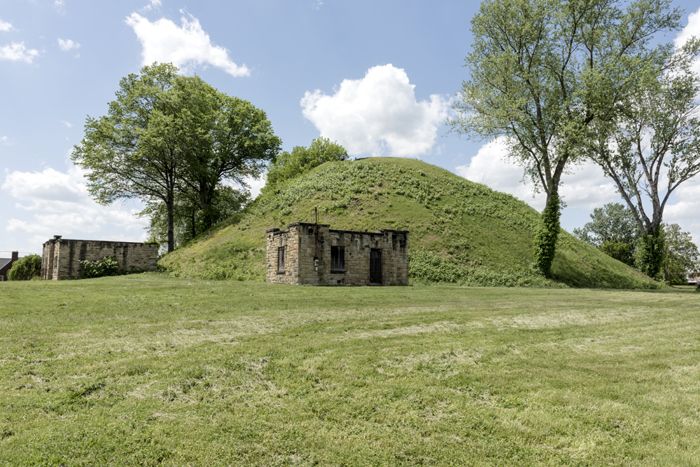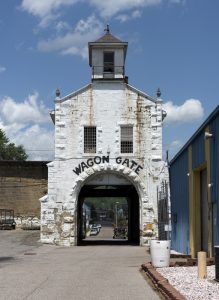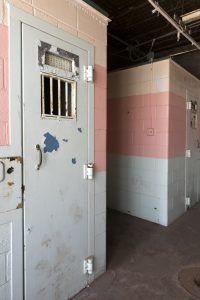The West Virginia Penitentiary located in Moundsville, West Virginia, not only provides visitors with a wealth of history, but some also say it is called home to several resident ghosts.
During the Civil War, West Virginia seceded from Virginia in 1863, and the new state was in immediate need of public institutions, including prisons. But building these places would take time and money. West Virginia Governor Arthur Boreman lobbied the new West Virginia Legislature for a state penitentiary but was repeatedly denied. As a result, prisoners were held in existing county jails or sent to institutions out of the state — but not to Virginia, which was still angry about the separation and barred West Virginia from using their facilities.
Many of the criminals were jailed in a small structure in nearby Wheeling, but it quickly became overcrowded, and in 1865, nine inmates escaped. Afterward, the state legislature finally took action in February 1866 and approved the purchase of land in Moundsville to build a state prison. The ten-acre site was convenient as it was just about 12 miles south of Wheeling, which was the state capitol at the time.
That summer, a temporary wooden prison was built surrounded by a wooden stockade that housed prisoners. In the meantime, officials worked with architects on the design of a new prison. They chose a gothic-style design that was similar to the 1858 Northern Illinois Penitentiary at Joliet. The building would be constructed of stone, complete with turrets, battlements, and lancet windows, giving it the appearance of a fortress.
Constructed with the help of inmate labor, the first structure built was the North Wagon Gate, made with hand-cut sandstone quarried from a local site. Work on the first phase of the prison continued until 1876, when it was completed at a total cost of $363,061. The north and south cellblock areas both measure 300 by 52 feet. The north wing was initially used as a kitchen, dining room, and chapel before additional cells were gradually added in the 1890s. In between the cellblocks is the four-story administration building that included space for female inmates on the third floor and personal living quarters for the warden and his family on the fourth floor. The second floor served as a hospital. The stone walls are 5 feet thick at the base, tapering to 2½ feet at the top.
The facility officially opened in 1876, at which time it housed 251 inmates, some of whom had helped to build the prison. Afterward, more facilities, workshops, and outbuildings were constructed, including a wash house, bakery, and hospital inside the North Recreation Yard.
In the next decades, more improvements were made to the facility. Steam heat was added in the mid-1870s, and coal oil lamps were replaced by electricity in 1900. Bricks were used for walkways and roads, which improved drainage and cleanliness of the grounds. The Administration building was also improved with an elevator installed in 1894 and an exterior porch that actually made the prison look a bit welcoming.
By the early 1900s, the prison also included several shops in which the inmates worked, including carpentry, paint, and wagon shops, stone and brickyards, a blacksmith, a tailor, a shoe shop, a bakery, and a hospital. In addition to a 200+ acre prison farm, these industries helped support the prison financially, and it was mostly self-sufficient. Prisoners also worked in the kitchen, stables, and wash house.
During this time, prison conditions were good, with the warden’s report stating: “both the quantity and the quality of all the purchases of material, food, and clothing have been very gradually, but steadily, improved, while the discipline has become more nearly perfect and the exaction of labor less stringent.” Education was also a priority for the inmates, and a school and library were built in 1900. The library grew to include over 5,000 books, and at one time, those who could not read were required to attend night school. Other educational classes and enriching programs were also available for all inmates.
The prison had its own band for recreation, which played in a bandstand located in the North Recreation Yard. Many inmates played on a baseball team that competed against local teams in Moundsville and the Ohio Valley area. For many years, the Print Shop published a magazine called Work and Hope. Church services were held in a large room on the second floor of one building.
By the 1920s, the female inmates were moved from the Administration building to a separate two-story building located in the northeast corner of the North Recreation Yard. This building had its own dining room and kitchen, in addition to cells. A high wall enclosed this section from the main part of the prison. During this time, approximately 50 women were employed in part of the shirt shop, making collars and cuffs for the shirts made by the men prisoners. The other women were employed in domestic work within the prison.
In 1921, a prison coal mine was opened about a mile away, which helped the facility with its energy needs and saved thousands of dollars each year. It also put inmates to work, some of whom were allowed to stay at the mine’s camp under the supervision of the mine foreman. In 1925, two new water wells were drilled that supplied the penitentiary, and in times of need, could supply the city of Moundsville.
Wardens reported descriptive records of life and operations of the prison to the governor in the 1920s. A 1926 report described the reception and discharge of prisoners:
“When a prisoner is received at the penitentiary, he is at once enrolled and given a serial number. He is then required to bathe, given a haircut and shave, and, if it is winter, dressed in prison clothes of cadet grey; if summer, lighter material is used. After a prisoner has been received, as stated above, he is given a thorough examination by the Prison Physicians, who carefully note all defects and keep a complete record of his examination. He is then measured by the Deputy Warden according to the Bertillon system, and a complete record is made showing nativity, color, parentage, religious antecedents, habits, domestic relations, and previous prison records, if any. A photograph is also made and filed with the record. If a prisoner is able-bodied, he is assigned to one of the factories operated within the prison and is required to labor nine hours every day, except Saturday afternoon, Sundays, and holidays. When a prisoner’s term has expired and the day comes for his final discharge, he is given a complete new outfit of citizen’s clothes of good material. Transportation is paid him to the county from which he was sent, and a cash allowance of $3.00 is given him, providing he does not have any money to his credit in the office. Prisoners are frequently discharged who have several hundred dollars to their credit. This represents the money made by “overtime” work in shops with prisoners being paid for all overtime at the same rate the State is paid for their labor. In this way, many prisoners aid materially in supporting dependent families, and they are encouraged to do so.”
In 1929, the size of the prison was doubled as overcrowding had become a problem. Three men were assigned to a 5 x 7-foot cell before this time, with two prisoners sleeping on the bunks and the third sleeping on a mattress on the floor. Inmate labor was again used to build a new wing connected to the south side of the prison and was completed in 1939. More expansion was also planned, though it was delayed by a steel shortage during World War II and wasn’t entirely completed until 1959.
During these years, conditions worsened until the facility was ranked by the U.S. Department of Justice as one of the top ten most violent correctional facilities in the country. Conditions began to deteriorate even more in the 1950s when overcrowding once again became a major problem. Once again, three prisoners were often forced to a 5 x 7-foot cell.
The penitentiary housed approximately 80 women prisoners until 1947 when a new facility was opened at Pence Springs, West Virginia, and the women were transferred.
The warden and his family continued to live in the Administration Building until a new dwelling was built just south of the penitentiary. The new Colonial Revival house featured a circular fish pond, side bay windows, a curved drive, a patio, tennis courts, and gardens.
In the 1960s and 70s, many of the older brick buildings within the North Recreation Yard were removed and replaced with concrete block and metal buildings. One of the buildings removed had been utilized for church services. In the 1970s, the local Pastors Association donated the present chapel building in the South Recreation Yard.
On November 7, 1979, there was a large prison break when 15 inmates escaped. During the escape, inmate Ronald T. Williams stole a prison guard’s service weapon, and when he encountered 23-year-old off-duty West Virginia State Trooper Philip S. Kesner, he shot and killed him. For the next 18 months, Williams remained at large, committing crimes across the nation and killing a man in Arizona during a robbery. After making the FBI’s Ten Most Wanted List, he was involved in a shootout with federal agents at the George Washington Hotel in New York City in 1981. He was apprehended and returned to West Virginia to complete several life sentences. As of January 2019, he remains in West Virginia custody.
During the prison break, the communication between the State and local police was said to have been poor, with local authorities hearing about the escape over the police scanner, which very well could have led to an earlier capture of the fugitives.
By 1986, the prison was undergoing several problems, including loose security, plumbing issues, insect infestations, and once again — overcrowding with a population of more than 2,000 men. During this time, security was so loose that some described the facility as a “cons’ prison,” where most of the locks on the cells had been picked, and inmates roamed the halls freely. On January 1, 1986, when the prison was short-staffed due to the holiday, inmates in the prison rioted.
At about 5:30 pm, 20 prisoners, who belonged to a group called Avengers, stormed the mess hall and attacked Captain Glassock, five other officers, and a food service worker. All of them were slammed to the floor and handcuffed with the guards’ handcuffs. More hostages were taken throughout the two-day upheaval. During the riot, three inmates were killed. Negotiations with Governor Arch A. Moore, Jr. resulted in a new list of rules and standards on which the prison would operate. None of the hostages were seriously injured.
That same year, the West Virginia Supreme Court ruled that confinement to the 5 x 7-foot cells constituted cruel and unusual punishment. Over the next decade, the population was reduced due to the building of more prisons. By 1995, the facility held only 600-700 inmates when the decision was made to close the facility.
During its 119-year tenure, approximately 998 men died in the prison; of these, 36 were homicides.
From 1899 to 1959, 94 men were executed at the prison, with 85 men executed by hanging. These executions were open to the public until June 19, 1931, when inmate Frank Hyer was hanged for murdering his wife. Unfortunately, when the trap door beneath him was opened, and he fell, he was instantly decapitated. Afterward, attendance at executions could only be by those who were invited. The last man hanged at the prison was a man named Bud Peterson from Logan County. He was buried in the prison’s cemetery after his death because his family refused to claim his body. In the early days, hangings probably took place near the North Wagon Gate. Later, a 1929 publication states that the Main Hospital Building was the location of the death row and execution room.
In 1949, the State Legislature decided electrocution was more humane. Nine men were killed in the electric chair before the state prohibited capital punishment in 1965. At that time, executions took place in a building called the Death House, where there were four holding cells on the first floor. This building no longer stands today.
Prisoners who died from execution or other causes were buried at the Whitegate Cemetery if relatives didn’t claim their bodies. The graves are designated with a license plate type marker. The cemetery is located about 3.5 miles east of the prison at 700 Toms Run Lane.
Today, there are no buildings or structures standing from the prison farm and coal mine as these sites are currently utilized by the Regional Jail facility in Moundsville.
After the prison closed, the Moundsville Economic Development Council leased the complex for 25 years. Today it serves a dual purpose as a training facility and a tourist attraction.
During its 119-year life as a penitentiary, the facility held some of the most violent killers, rapists, and other criminals, many of whom never left the institution alive. It comes as no surprise that this type of environment would leave behind more than a few wandering spirits.
Another reason this old building may be haunted is because it is said that it was built on an ancient Native American burial ground. This would not be hard to believe as the old prison was built directly across from the Grave Creek Mound, one of the largest conical-type burial mounds in the United States. Members of the Adena culture moved more than 60,000 tons of dirt to create it in about 250–150 BC. Some believe that negative energy from the deceased Native Americans infiltrated the prison, resulting in many of the paranormal events that have occurred there.
Hauntings have been reported as early as the 1930s. During this time, an inmate was often spied walking along a maintenance area where prisoners were not allowed. In some cases, the guards set off alarms, but there was no one there and no inmates unaccounted for when they investigated.
The old recreation room in the basement, called “The Sugar Shack” by prisoners, was once infamous for illegal gambling, drug deals, rape, fighting, and murder. Today, visitors report hearing unseen people arguing, talking, and whispering here. Others have heard unexplained noises and felt cold spots within the room. In addition to the recreation room, the whole basement area is said to be haunted by a maintenance man who once worked here. He was said to have often spied on the prisoners and was quick to report any news or infractions to the guards. In retaliation, he was stabbed several times with shives when he was in the bathroom. After his death, this ghost was said to wander around in the basement area, and some people have reported equipment malfunctions.
The North Wagon Gate, the prison’s oldest structure, is said to be home to one of the prison’s most active ghosts. This area once held the execution gallows where a man named Orville Adkins was hanged in 1938. Here, visitors say the area exudes an evil feeling, and they feel as if they’re being watched. Mysterious sounds and voices have been captured in EVPs, and ghosts of the condemned are sometimes seen. The gate is haunted by Orville Adkins, who was condemned for kidnapping a minister who was later found dead. However, his execution was botched. As the noose was being placed around his neck, a nervous assistant pulled the trap door handle too quickly, and Orville fell 20 feet to the stone walkway. Though he was stunned and hurt, he was still alive. He was then pulled back up to the scaffold and hanged correctly. His footsteps are said to be heard slowly pacing back and forth.
The North Hall was where the prison’s worst offenders were placed, not for the crimes they committed outside but for their violent behavior on the inside. Though they were locked down in their cells for 23 hours a day, two murders occurred here. One was a biker named Danny, who was stabbed in the eye by another inmate and died of his hemorrhages. The other was William “Red” Snyder, who was convicted of murdering his parents and dismembering their corpses. Red was disliked by many inmates and involved in several fights. In the end, he was attacked in front of his cell and fatally stabbed 37 times. The hall has been the site of many strange events, including photographic anomalies, equipment malfunctions, the sound of cell doors banging when no one is there. Many have reported feeling very uncomfortable there. Red Snyder’s cell is said to be particularly haunted.
In the solitary confinement area, people have often reported feeling cold spots and as if they have been touched on their backs.
Other hotspots include Death Row, the psych ward, chapel, shower cages, dining room, and boiler room.
There is one particular entity that is called the “Shadow Man” because he lurks in dark places and has no visible features. He has been described as appearing like a dark shadow that is very intimidating.
Throughout the prison, visitors and staff report seeing fleeting glimpses of apparitions, smelling unpleasant odors, strange noises and echoes, feelings of being watched, and a disembodied voice that says, “Help, I am trapped.” Visitors have felt brushed, tapped, and even shoved by invisible hands, and cameras have captured ghostly mists, faces, figures, and orbs. Some have seen the ghosts of prisoners in uniforms walking the halls and disappearing into walls.
The West Virginia Penitentiary is considered one of the most haunted prisons in all of the United States today. It is also listed on the National Register of Historic Places.
Visitors to the prison can experience 90-minute day tours, 3-hour Investigations, overnight investigations, and various events from April through December.
More Information:
West Virginia Penitentiary Tours
818 Jefferson Avenue
Moundsville, West Virginia 26041
304-845-6200
© Kathy Weiser-Alexander/Legends of America, updated August 2021.
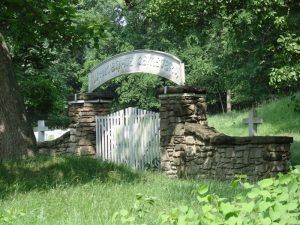
Many former prison convicts are buried at the Whitegate Cemetery about 3.5 west of the old prison. Their graves are marked only with a number.
Also See:
Old Prison Museum in Deer Lodge, Montana
Eastern State Penitentiary, Philadelphia
Haunted Missouri State Penitentiary in Jefferson City
Legends, Ghosts, Myths & Mysteries
Trans-Allegheny Lunatic Asylum in Weston
Sources
Can You Actually
Ghost Walks
Guiley, Rosemary Ellen; The Big Book of West Virginia Ghost Stories; Stackpole Books, 2014
Haunted Places
Ohio County Public Library
Wikipedia


